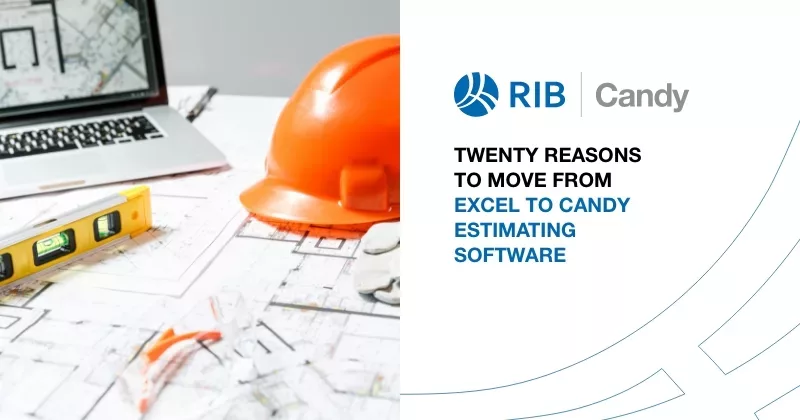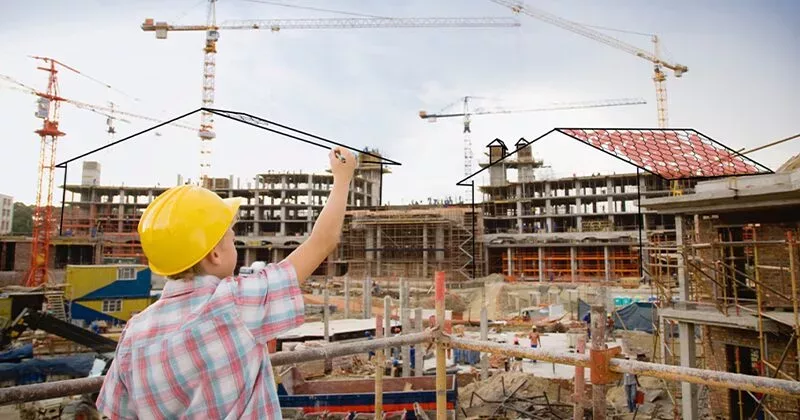11 mins read
The Importance of Project Management in the Mining Industry

Project management is like a game of chess, where every job requires you to update your strategy in real-time to meet the challenges of an ever-changing playing field. This is often accomplished while managing various elements, including safety, procurement, cost, and risk, all of which must align for you to complete a project on schedule. While the job of a construction project manager is always difficult, the role of a mining project manager goes several layers deeper.
In this blog post, we review project management for mining to understand what makes it different and how it presents unique challenges and opportunities. We also provide a list of useful tips and best practices that can lead to greater success in mining project control.
What Is Project Management in Mining?
Project management in mining is an essential function that includes planning, overseeing, and completing complex mining projects. This role requires knowledge of geology, science, and engineering and exceptional people skills to maintain job site cooperation.
Mining project management can be a highly visible and stressful role, with worker safety constantly balanced against financial success and efficiency. A project manager may begin their journey by overseeing geological surveys and site planning activities and continue through the design, construction, and full operation of the mine. For this reason, those who excel in this role must have a strong combination of education, leadership skills, and direct experience gained in the mining industry.
Additional functions and responsibilities associated with mine project management include:
- Developing detailed plans and budgets to determine the economic viability of the mine.
- Securing permits and licenses to ensure regulatory compliance.
- Monitoring costs, timelines, and resources during mine construction.
- Supervising day-to-day mine operations to ensure safety standards and productivity are upheld.
Despite the many challenges, project management in mining industry roles can also be very rewarding since each new opportunity presents different technical obstacles, environmental conditions, and staffing needs that require innovation and quick decision-making to manage effectively.
Mining Project Management Benefits

The most successful mining project managers combine advanced digital tools with their existing industry knowledge and collaboration skills to produce a winning combination. Software tools for design, construction, project management, and asset management each contribute to the success of the operation, bringing a host of benefits when utilized effectively. These benefits include:
Improved productivity
Productivity has become a key metric in the mining industry, with increasingly scarce resources making it more important for mines to be designed and built on schedule and perform up to expectations once they are operational. Mining project management practices directly influence and improve productivity with the help of tactics like scenario planning that allow them to understand the impact of potential events and workflows. Project managers can also utilize real-time monitoring solutions to aid in resource planning and adjust equipment deployments when necessary.
Increased safety
Extreme temperatures, cave-ins, explosions, and toxic gases are among the many factors that make mining one of the most dangerous occupations in the world. Effective project management for mining helps to improve site safety by creating a centralized hub of information that keeps miners and other workers informed on hazardous conditions in real-time.
Project managers facilitate the monitoring of air quality, equipment conditions, extreme weather events, and other safety information they share with project teams through meetings, reports, alerts, and face-to-face communication. They also ensure the correct training and personal protective equipment (PPE) is provided to all miners, contractors, and support staff.
Enhanced decision-making
The safety hazards and dynamic conditions found in mining projects often lead to situations where managers must act quickly and make important decisions. Good instincts and experience are always desirable traits, but data-driven mining industry software and practices allow project managers to make informed decisions without creating project delays. Data analysis and risk management practices feed into decisions on scheduling and task prioritization that improve productivity without degrading safety or overworking employees.
Improved sustainability
Mining and sustainability are not always an ideal combination, with the industry contributing 10% of all annual greenhouse gas (GHG) emissions worldwide. Mining processes can also damage water sources and native ecosystems, sometimes permanently. Green mining practices developed to reverse these trends focus on reduced energy consumption and waste, along with minimized land disruption.
Strong project management in mining is necessary to monitor sustainability factors and track environmental impact over time while remaining in compliance with relevant local regulations. Carbon estimating software makes it easier to assess the impact of each project decision on embodied carbon and other forms of pollution.
Better asset management
Over the long lifespan of a commercial mining project, asset management is one of the most essential mining project management responsibilities. Mining assets include heavy equipment and vehicles costing millions of dollars, processing facilities, communication networks, and other dispersed infrastructure and physical resources that can be difficult to track.
Project managers are now leveraging asset management software and technology like RFID tags and the Internet of Things (IoT) to track the position and condition of each asset while ensuring they are utilized for the appropriate tasks. Given the high associated costs, asset management is also an important part of the project budgeting, procurement, and contingency planning activities.
Why is Project Management in the Mining Industry so Challenging?
The benefits of project management for mining are balanced by many risks, regulations, and unforeseen events that ensure no two days are ever alike, and there is never a lack of new challenges. Effective mining project management requires:
- Design and planning. Geological surveys, site mapping, and input from many different disciplines make the design and planning of complex mining operations challenging. Detailed mine project management activities protect safety and minimize environmental impact.
- Budgeting. Pulling in all available information gleaned from the planning stage to create a first principal resource and productivity-based budget allows for more accurate management of the actual spending. Volatile commodity prices, unexpected geological conditions, and variable operating costs can add a layer of uncertainty to budgeting tasks.
- Monitoring of actuals. Observing and reviewing every element of an ever-changing project, including the cost, daily progress, risk profile, and change control, can be difficult in dynamic mining operations. Negative trends in equipment performance or labor productivity can easily escape managers’ notice without adequate visibility.
- Actual cost vs. budget and forecasting. The only constant is change. Unexpected events and expenses, including equipment breakdowns, weather delays, and fuel price increases, can make it challenging to maintain budget compliance or set appropriate contingency percentages. An accurate, real-time budget will allow for reliable forecasting with far less guesswork.
- Decision reporting. Once all available information has been gathered into a single database, the right choice for every situation can be made with greater certainty. Mining software provides access to data and analytical capabilities that support effective decision-making and reporting processes in mining operations.
With such a daunting array of challenges to address and vast amounts of information to process, it’s easy to feel overwhelmed when managing a mining project. Fortunately, through ground-breaking innovations in software and data processing, we can now react and respond more efficiently when time is of the essence.
Tips for Successful Mining Project Control

The keys to effective project control are nearly universal across all construction project types and sizes. Still, mining is a specialty that benefits from higher levels of foresight, visibility, and collaboration to deal with unique and unpredictable conditions. A few basic tips and practices for project management in mining industry roles can spell the difference between success and failure.
1. Understand the project needs and scope
For any project, understanding the goals, milestones, and timeline is always the first step, but mining introduces elements that are not always relevant to other construction project types. Determining the project cost and the expected profit margin can be difficult since volume and tonnage projections for minerals and other natural resources remain an inexact science. Unique geographic conditions also call for innovative designs that must be carefully vetted by civil engineering and safety experts. When the project needs and scope are well-defined early on, this will provide ongoing benefits that help to streamline operations.
2. Ensure continuous collaboration
Communication and collaboration are not always easy in the mining industry, with underground workspaces and dispersed crews who often lack wi-fi or cell phone connectivity, making real-time communication difficult. Mining project management techniques help to overcome these constraints through regular meetings and improvement projects that encourage cross-functional participation. Cloud-based software tools make it possible to involve all stakeholders as quickly as possible.
3. Implement real-time progress tracking
Visibility is another essential attribute of mining project management that can be hard to maintain, even though progress tracking is essential for measuring mine productivity against expectations and making informed decisions either during construction or full operation. The interactive dashboards, integrated data sources, and KPI monitoring capabilities of RIB BI+ software enhance mining visibility through advanced analytics and real-time data access, allowing key results and metrics to be reviewed instantly.
4. Don’t neglect sustainability
Sustainability is one of the most important benefits of mining project management, but the ongoing pressure to produce can easily put green initiatives on the back burner. Managers and other key stakeholders in mining projects can keep sustainability in focus throughout all phases by setting clear objectives for waste reduction, water conservation, and efficiency early on and creating metrics that are regularly tracked and reported. Training programs to promote sustainable practices also help to embed these goals and ideas into the overall culture.
5. Choose the right project management methodology
A project management methodology is the set of practices, tools, and principles that guide the mining operation throughout its lifespan. Many different practices have evolved to suit the unique needs of the mining and construction industry, and choosing one that best suits the project is a critical decision. For example, complex mining endeavors might utilize the Critical Path Method (CPM) to optimize timelines and identify dependencies. At the same time, Integrated Project Delivery (IPD) methods build collaboration and shared responsibility into the project plan to improve efficiency.
6. Learn from successes and failures
Repetitive construction projects like tract housing developments, commercial office buildings, and data centers can easily apply cost estimation, process workflow, and scheduling lessons learned from one project to the next. Since each new mining operation is unlike anything preceding it, mining managers must learn from successes and failures. For example, historical information on safety issues, resource shortfalls, equipment issues, and cost overruns can become valuable information when developing mining contingency budgets, schedules, and project plans.
The Fourth Industrial Revolution
The arrival and implementation of big data, artificial intelligence (AI), and cloud-based computing have brought a veritable flood of insight into every human activity.
The fourth industrial revolution, as it has come to be known, introduced amazing new tools to create a truly complete and real-time digital model for achieving project goals.
Traditionally, the mining sector has been among the slowest to embrace technological advancements, but this could change soon.
AI’s analytical power is now coupled with the terabytes of information collected through big data projects and systems each day. This allows mining companies to implement digital twin modeling, a virtual simulation that produces a carbon copy of a mine’s operations in the digital world.
This simulation technology allows many variables to be manipulated to test theories and understand how they will affect the mine before implementing them in the real world. As an example, project managers can learn precisely how and where the optimal amount of ore can be extracted with the minimum amount of risk.
Cloud-based estimation and engineering software like RIB BuildSmart and RIB Candy also make inroads into the mining project management space. With real-time access to information from anywhere on the site, project managers can be guaranteed the single source of truth they need.
These two solutions can be integrated into a single software, RIB CanBuild, linking your estimating, project control, enterprise accounting, and operational tools into one. Critical information is updated and shared in real-time to ensure you always stay one step ahead of the game.
In the end, no one can ever predict the future. But with the right technology and tools, you can ensure that your strategies earn you the richest rewards, regardless of the obstacles and changes. If you are ready to experience the power of innovative solutions, get a free demo for RIB CanBuild today!

Most Recent
11 mins read
10 mins read
10 mins read
29 mins read
Blog Categories

Ebook











